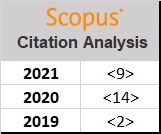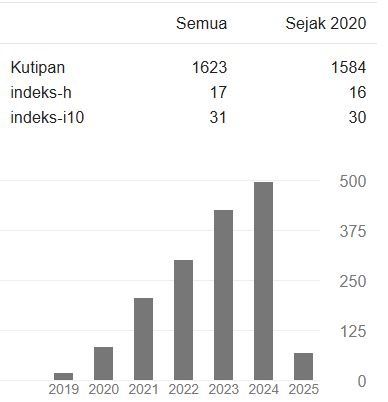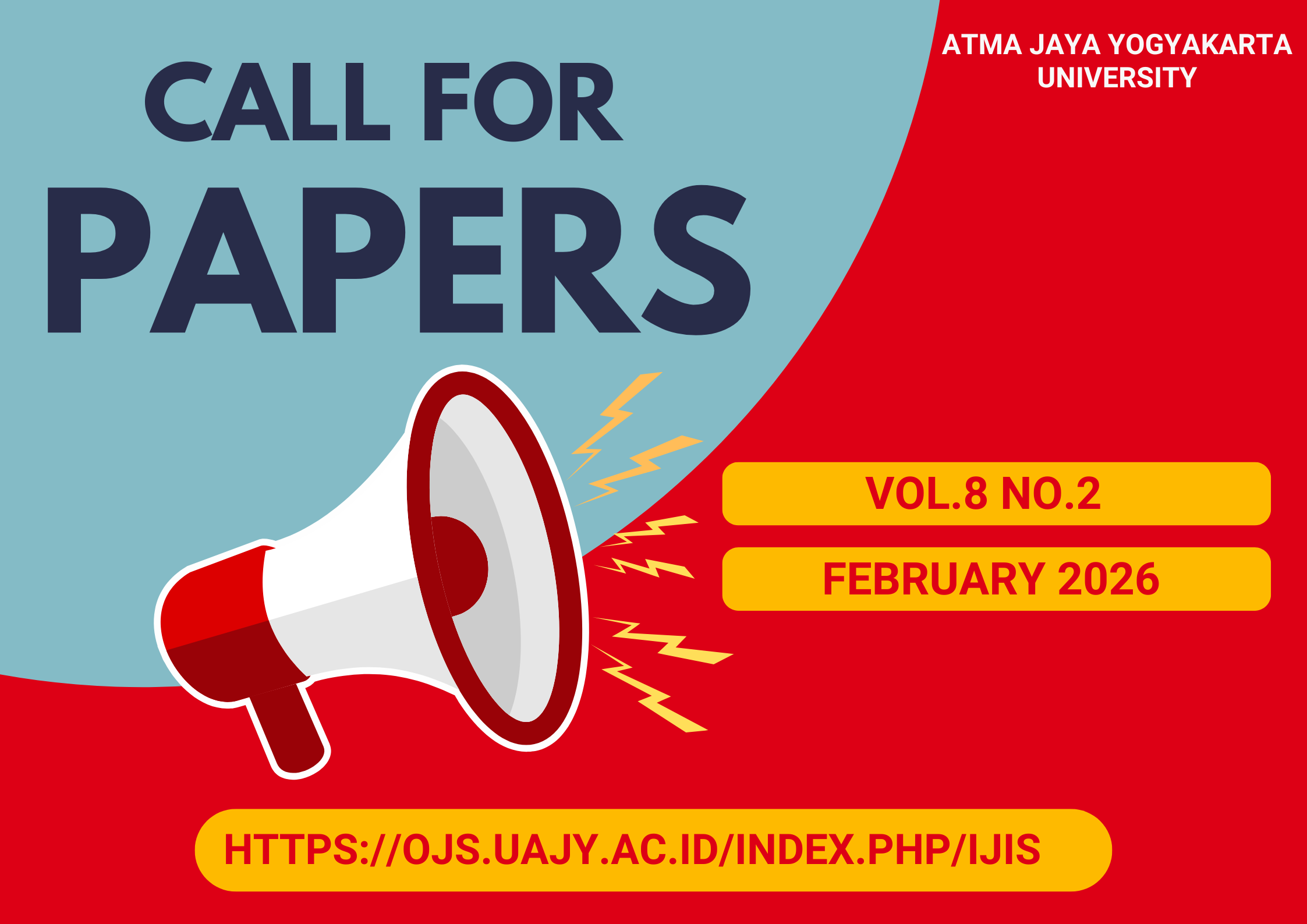Eksplorasi Teori Gratifikasi untuk Layanan Jejaring Sosial: Studi Kasus Sikap Pengguna terhadap Instagram di Indonesia
DOI:
https://doi.org/10.24002/ijis.v1i2.1922Keywords:
Social Network Service (SNS), Instagram, Uses and Gratification Theory (UGT)Abstract
Instagram merupakan Social Network Service (SNS) yang populer di kalangan pengguna smartphone. Fakta ini didukung oleh hasil survei dalam laporan yang berjudul “Digital In 2018 In Southeast Asia” yang dihimpun oleh We Are Social, perusahaan media asal Inggris yang bekerja sama dengan Hootsuite. Hasil survei tersebut menyebutkan bahwa Instagram menempati peringkat ketiga aplikasi yang paling banyak diunduh pada tahun 2018. Menyoroti respon pengguna smartphone yang begitu besar terhadap Instagram, maka dalam penelitian ini dilakukan eksplorasi faktor penerimaan sikap pengguna terhadap Instagram di Indonesia dengan menggunakan Teori Uses And Gratification (UGT). Pemenuhan penerimaan Instagram dibagi menjadi Cognitive, Hedonic, Integrative, dan Social Integrative. Dalam penelitian ini dikumpulkan tanggapan dari 400 pengguna Instagram di Indonesia. Data yang diperoleh diolah dan dianalisis dengan menggunakan Metode Structural Equation Modelling (SEM) dan perangkat lunak WarpPLS 6.0. Dari penelitian ini diperoleh dua temuan. Pertama, sikap pemuasan pengguna terhadap Instagram dipengaruhi oleh Cognitive, Hedonic, dan Social Interactive. Kedua, Sosial Interactive Gratification merupakan faktor yang dapat meningkatkan Cognitive Gratification, Hedonic Gratification, dan Integrative Gratification.
References
M. Mulawarman and A. D. Nurfitri, “Perilaku Pengguna Media Sosial beserta Implikasinya Ditinjau dari Perspektif Psikologi Sosial Terapan,” Bul. Psikol., vol. 25, no. 1, Jun. 2017.
L.-Y. Huang, Y.-J. Hsieh, and Y.-C. J. Wu, “Gratifications and social network service usage: The mediating role of online experience,” Inf. Manag., vol. 51, no. 6, pp. 774–782, Sep. 2014.
T. Doleck, P. Bazelais, and D. J. Lemay, “Need for self-expression on instagram: A technology acceptance perspective,” in 2017 3rd International Conference on Computational Intelligence & Communication Technology (CICT), 2017, pp. 1–3.
J. Apodaca, “True-self and The Uses and Gratifications of Instagram Among College-aged Females,” University of Nevada, Las Vegas, 2017.
Lindsey T. Bryden, “Online Dating Applications and The Uses and Gratifications Theory.,” Eastern Washington University, 2017.
Narudin, Pengantar Komunikasi Massa. Jakarta: PT. Raja Grafindo Persada, 2011.
R. West and Lynn., Pengantar Teori Komunikasi, Analisis dan Aplikasi. Jakarta: Salemba Humanika., 2008.
L. Garton, C. Haythornthwaite, and B. Wellman, “Studying Online Social Networks,” J. Comput. Commun., vol. 3, no. 1, pp. 0–0, Jun. 2006.
K. Soeparno, “Social Psychology: The Passion of Psychology,” Bul. Psikol., vol. 19, no. 1, 2011.
N. B. Ellison, J. Vitak, R. Gray, and C. Lampe, “Cultivating Social Resources on Social Network Sites: Facebook Relationship Maintenance Behaviors and Their Role in Social Capital Processes,” J. Comput. Commun., vol. 19, no. 4, pp. 855–870, Jul. 2014.
R. Rauniar, G. Rawski, J. Yang, and B. Johnson, “Technology acceptance model (TAM) and social media usage: an empirical study on Facebook,” J. Enterp. Inf. Manag., vol. 27, no. 1, pp. 6–30, Feb. 2014.
X. Zhu and Z. Bao, “Why people use social networking sites passively,” Aslib J. Inf. Manag., vol. 70, no. 2, pp. 158–175, Mar. 2018.
J. Phua, S. V. Jin, and J. (Jay) Kim, “Uses and gratifications of social networking sites for bridging and bonding social capital: A comparison of Facebook, Twitter, Instagram, and Snapchat,” Comput. Human Behav., vol. 72, pp. 115–122, Jul. 2017.
E. Dantoso and Mite, Teori komunikasi. Yogyakarta: Graha Ilmu, 2010.
S. Nambisan and R. A. Baron, “Interactions in virtual customer environments: Implications for product support and customer relationship management,” J. Interact. Mark., vol. 21, no. 2, pp. 42–62, Jan. 2007.
Y. W. Ha, J. Kim, C. F. Libaque-Saenz, Y. Chang, and M.-C. Park, “Use and gratifications of mobile SNSs: Facebook and KakaoTalk in Korea,” Telemat. Informatics, vol. 32, no. 3, pp. 425–438, Aug. 2015.
A. P. J. I. Indonesia, “APJII,” 2018. .
N. M. Punyanunt-Carter, J. J. De La Cruz, and J. S. Wrench, “Investigating the relationships among college students’ satisfaction, addiction, needs, communication apprehension, motives, and uses & gratifications with Snapchat,” Comput. Human Behav., vol. 75, pp. 870–875, Oct. 2017.
J. J. Al-Menayes, “Motivations for Using Social Media: An Exploratory Factor Analysis,” Int. J. Psychol. Stud., vol. 7, no. 1, Feb. 2015.
A. Hicks, S. Comp, J. Horovitz, M. Hovarter, M. Miki, and J. L. Bevan, “Why people use Yelp.com: An exploration of uses and gratifications,” Comput. Human Behav., vol. 28, no. 6, pp. 2274–2279, Nov. 2012.
A. E. Krause, A. C. North, and B. Heritage, “The uses and gratifications of using Facebook music listening applications,” Comput. Human Behav., vol. 39, pp. 71–77, Oct. 2014.
L. Gao and X. Bai, “An empirical study on continuance intention of mobile social networking services,” Asia Pacific J. Mark. Logist., vol. 26, no. 2, pp. 168–189, Apr. 2014.
S. Alhabash, Y. Chiang, and K. Huang, “MAM & U&G in Taiwan: Differences in the uses and gratifications of Facebook as a function of motivational reactivity,” Comput. Human Behav., vol. 35, pp. 423–430, Jun. 2014.
W. Chaouali, “Once a user, always a user: Enablers and inhibitors of continuance intention of mobile social networking sites,” Telemat. Informatics, vol. 33, no. 4, pp. 1022–1033, Nov. 2016.
E. B. Weiser, “The Functions of Internet Use and Their Social and Psychological Consequences,” CyberPsychology Behav., 2002.
W. Pahnke, “Drugs and mysticism,” Int. J. Parapsychol., vol. 8, no. 2, 1966.
J. Brown, A. J. Broderick, and N. Lee, “Word of mouth communication within online communities: Conceptualizing the online social network,” J. Interact. Mark., 2007.
H.-S. Chiang, “Continuous usage of social networking sites,” Online Inf. Rev., vol. 37, no. 6, pp. 851–871, Nov. 2013.
L. Humphreys, “Mobile Social Networks and Social Practice: A Case Study of Dodgeball,” J. Comput. Commun., vol. 13, no. 1, pp. 341–360, Oct. 2007.
I. Ajzen, “Nature and Operation of Attitudes,” Annu. Rev. Psychol., vol. 52, no. 1, pp. 27–58, Feb. 2001.
A. V. Hausman and J. S. Siekpe, “The effect of web interface features on consumer online purchase intentions,” J. Bus. Res., vol. 62, no. 1, pp. 5–13, Jan. 2009.
J. F. Hair, C. M. Ringle, and M. Sarstedt, “PLS-SEM: Indeed a Silver Bullet,” J. Mark. Theory Pract., vol. 19, no. 2, pp. 139–152, Apr. 2011.
Latan and Imam, Partial least squares konsep, metode dan aplikasi menggunakan metode WarpPLS 5.0. Semarang: Badan Penerbit Universitas Diponegoro, 2012.
Sholihin and Dwi, Bukunya Analisis SEM- PLS dengan WARPLS 3.0. Yogyakarta: C.V ANDI OFFSET, 2013.
Sudarmanto, In Statistic Terapan Berbasis Komputer dengan IBM SPSS Statistics 19. Jakarta: Mitra Wcana Media, 2013.
Abdillah, Willy, and Jogiyanto, Partial Least Square (PLS) : AlternatifStructural Equation Modeling (SEM) dalam Penelitian Bisnis. Yogyakarta: ANDI, 2015.
J. F. Hair, C. M. Ringle, and M. Sarstedt, “Partial Least Squares Structural Equation Modeling: Rigorous Applications, Better Results and Higher Acceptance,” Long Range Plann., 2013.
N. C. Wibowo, T. L. M. Suryanto, A. Faroqi, and R. Hadiwiyanti, “Understanding the Dominant Factors towards the Intention to Use Youtube continuously in Indonesia,” in Proceedings of the International Conference on Science and Technology (ICST 2018), 2018.
Downloads
Published
How to Cite
Issue
Section
License
Indonesian Journal of Information Systems as journal publisher holds copyright of papers published in this journal. Authors transfer the copyright of their journal by filling Copyright Transfer Form and send it to Indonesian Journal of Information Systems.

Indonesian Journal of Information Systems is licensed under a Creative Commons Attribution-NonCommercial 4.0 International License.

















